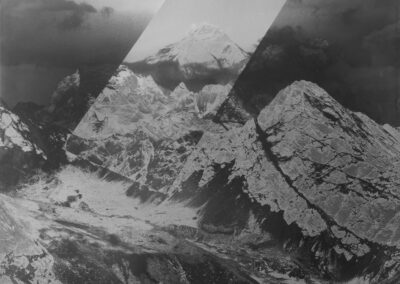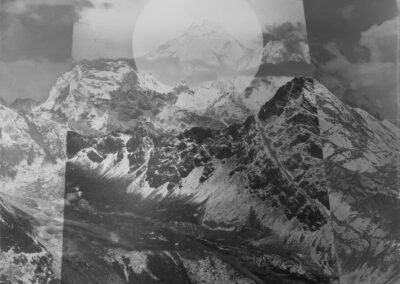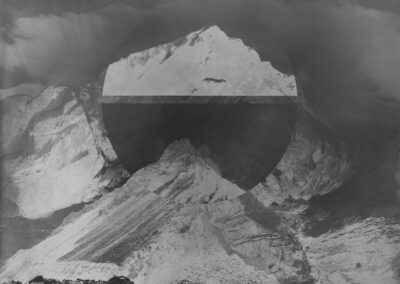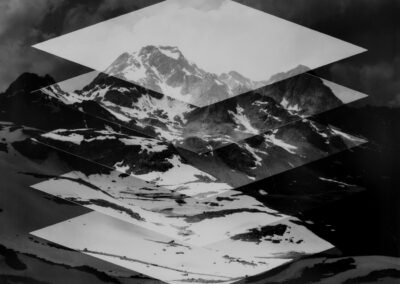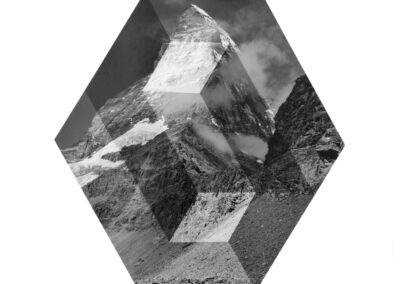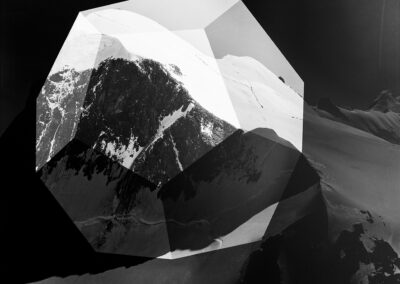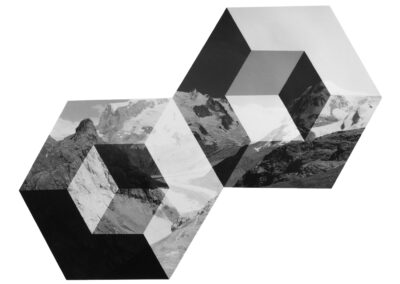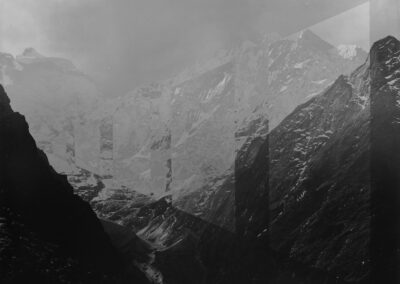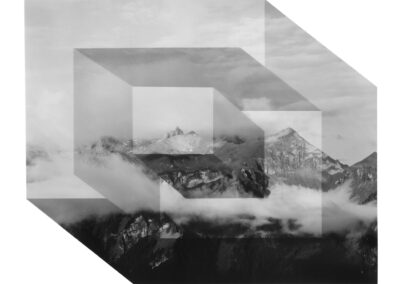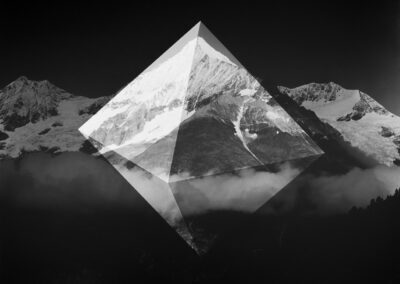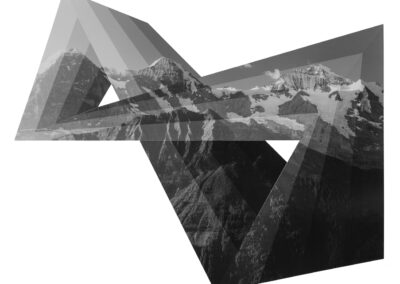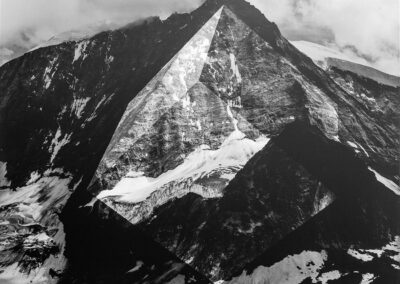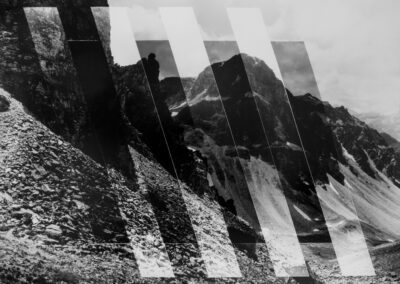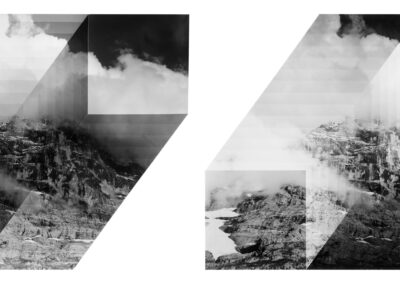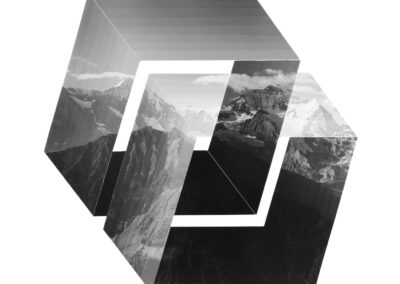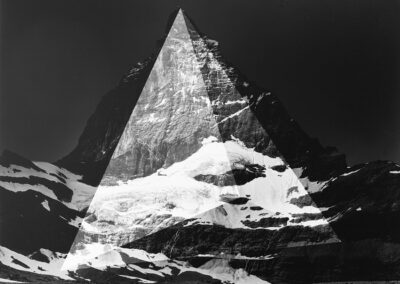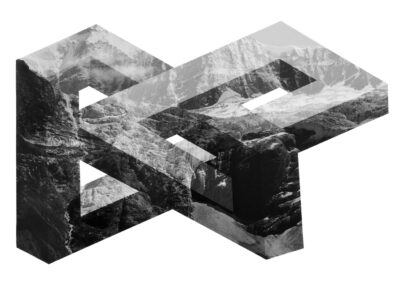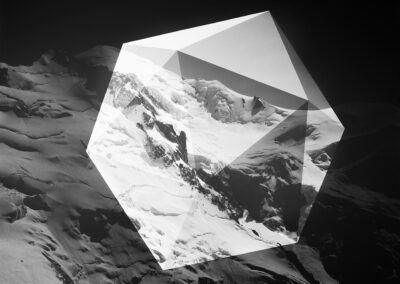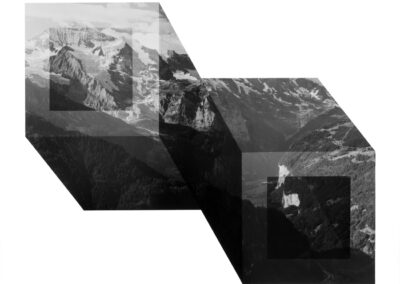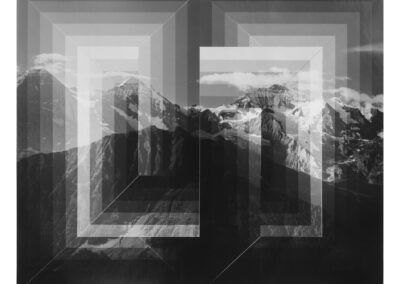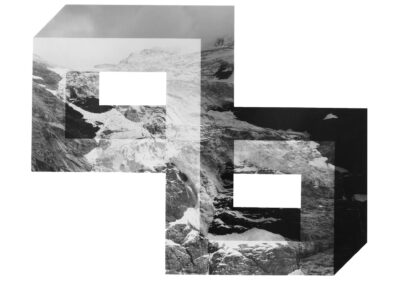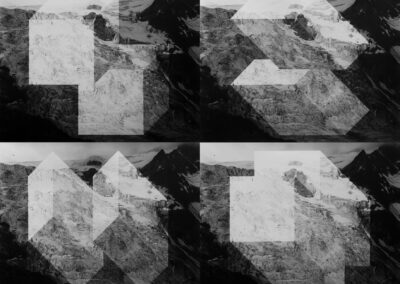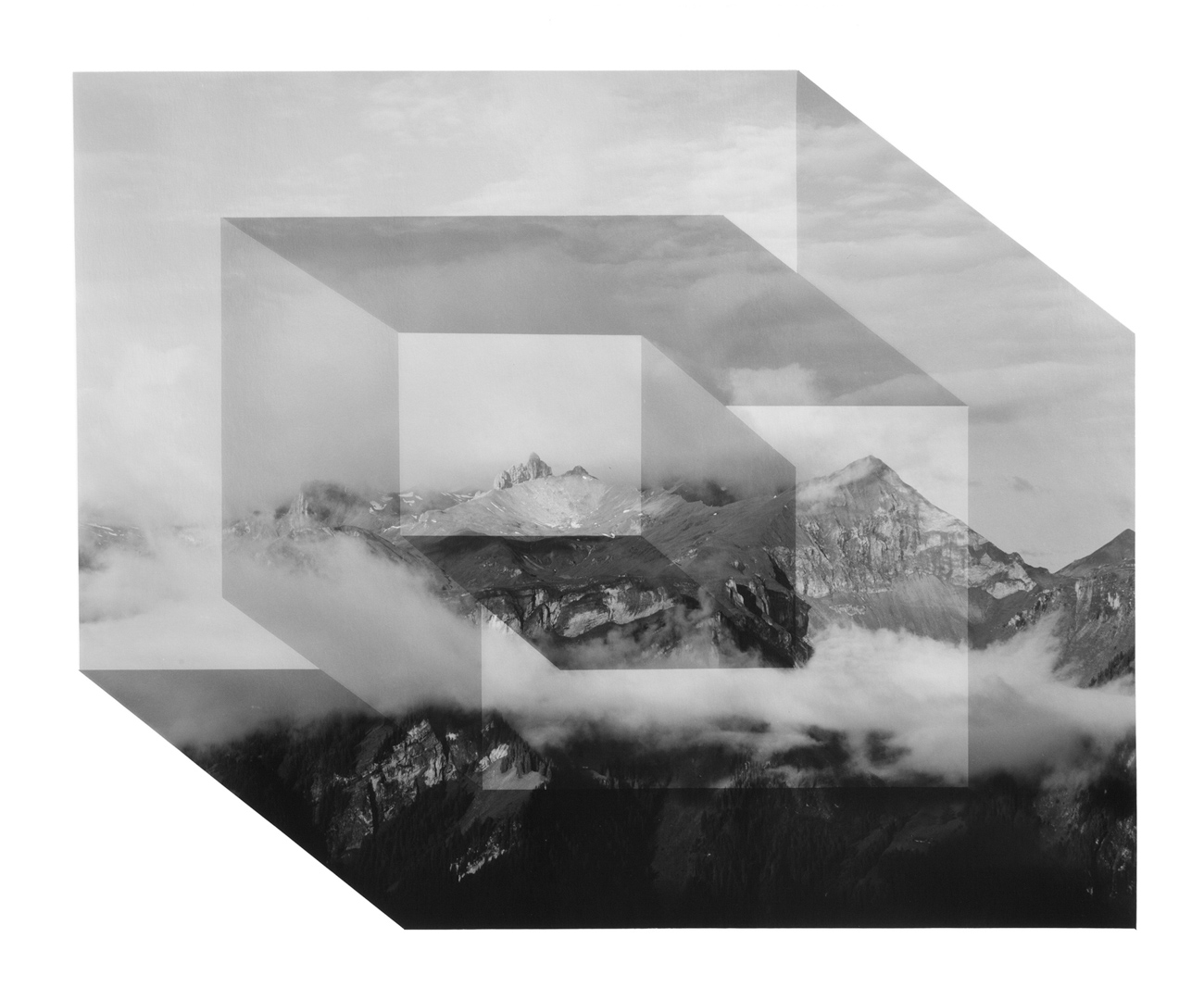
Moving to the American Midwest marked a distinct shift in my artistic practice. It wasn’t a conscious one, but perhaps one that surfaced through a nostalgic longing for what lacks in the glaciated, urban environment of southern Michigan: access to dramatic natural landscape. I became increasingly interested in the idea of landscape and the clichéd imagery that fills that longing. Having recently traveled to the American West prior to my relocation to Detroit, I became equally seduced and critical of these romantic visions that were markedly absent in my new environment.
My work has evolved into an investigation of idealized landscape imagery – the kind that is easily consumable and often commodified. I am fascinated with the landscape genre and its language, the aesthetic imposed onto the land through photographic framing, and the historical rhetoric inherent in these images that justified American Manifest Destiny and Imperialism through what is left out—namely inhabitants. Landscape is a highly-charged symbol at the service of specific ideologies, representing the projected identity and desires of those who use it. While it can produce delight in the viewer, it can also naturalize power relations, and erase history and legibility. I am drawn to it precisely because of this duality.
My recent work combines landscape photography and darkroom sleight of hand. Using photographic images of mountains as a surrogate for the sublime experience, “Mount Analogue” explores the paradoxical relationship between photography, which can only represent what is in front of the camera’s lens, and the ineffable nature of the sublime experience. Using a single negative and multiple exposures in the darkroom, I create the illusion of abstract geometric forms and platonic solids to overlay and define the perimeter of romantic mountain photographs.
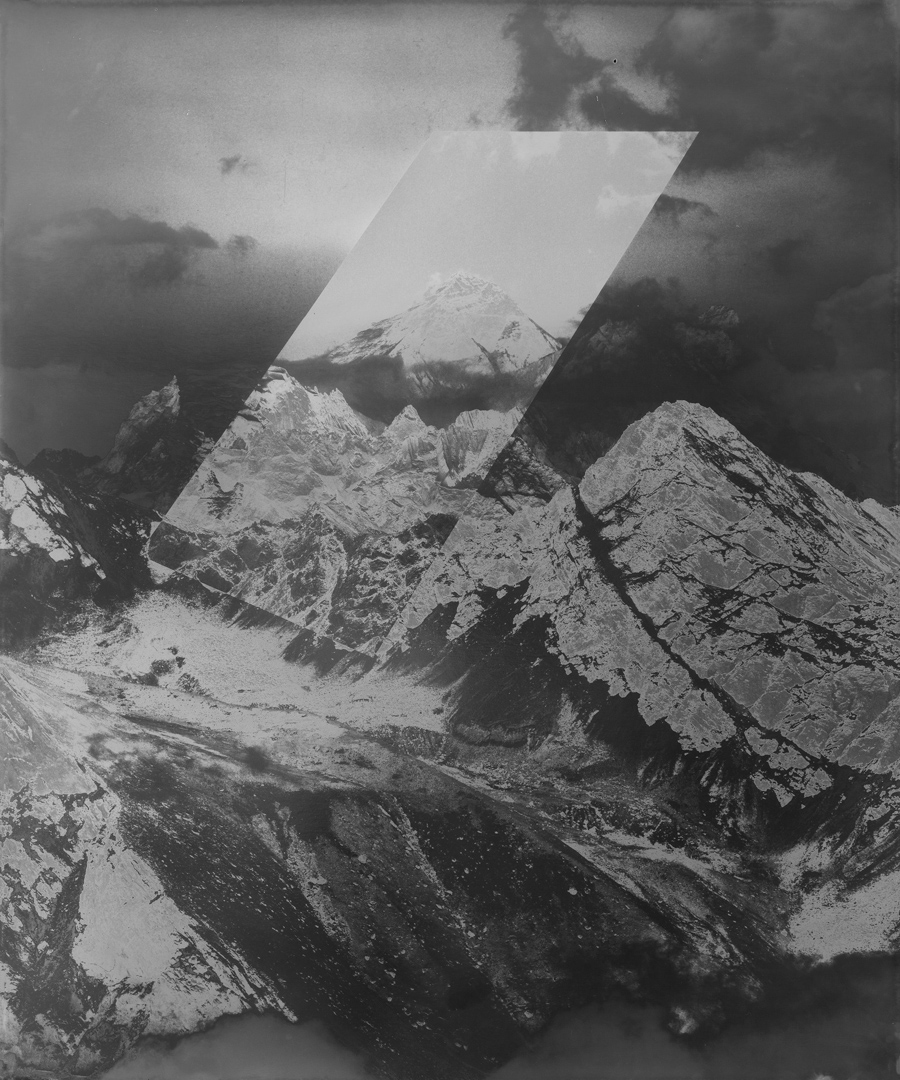
The production of this work is two-fold. The first part is experiential – I travel to iconic landscapes and photograph them. I have photographed the Andes in southern Argentina and Chile, and made two separate trips to photograph the Alps in France and Switzerland, and traveled to the Sagarmatha (Everest) region of the Himalaya – hiking over 400 miles with my 4×5 field camera in my backpack.
The second part of my work is studio-based and experimental. In the darkroom, I use masking and multiple exposures to re-make the landscapes. It is during this time that I reexamine my experience of place and craft the visual language to express it.
The formal strategies I employ in this work are informed by Op Artists of the 1960’s who used abstraction to challenge the nature of vision. Like them, I am interested in the space between what we see and what we know. I employ these visual phenomena through photography, a medium intrinsically tied to optical vision, as a way to undermine its authority and truth-value. Through this process, I explore the assertion of the mind’s attempt to rationalize and tame that which exceeds the limits of perception.
A selection of the images from the series are shown below (click to view image at full size / original format).
ABOUT MILLEE TIBBS
Millee Tibbs’ work derives from her interest in photography’s ubiquity and the tension between its truth-value and inherent manipulation of reality. Tibbs is an associate professor of photography at Wayne State University. She holds an MFA in Photography from the Rhode Island School of Design. She is the recipient of two MacDowell Colony fellowships, as well as multiple national and international artist residency awards. Her work has been published by the Humble Arts Foundation, NYC and the Aperture Foundation, and is held in the permanent collections of the George Eastman Museum, Detroit Institute of Arts, the Chrysler Museum, the Portland Art Museum, and the RISD Museum.
OTHER INFORMATION
Upcoming exhibition:
“Mount Analogue” Filter Space, Chicago, February 19 – March 20, 2021
filterphoto.org/mount-analogue
Website: milleetibbs.com
Instagram: @sbbiteellim
CREDITS
Titles for the works in “Mount Analogue” were a collaboration with Irish poet Lawrence O’Dwyer.
Unless otherwise stated, all other words and images in this article are © Millee Tibbs

